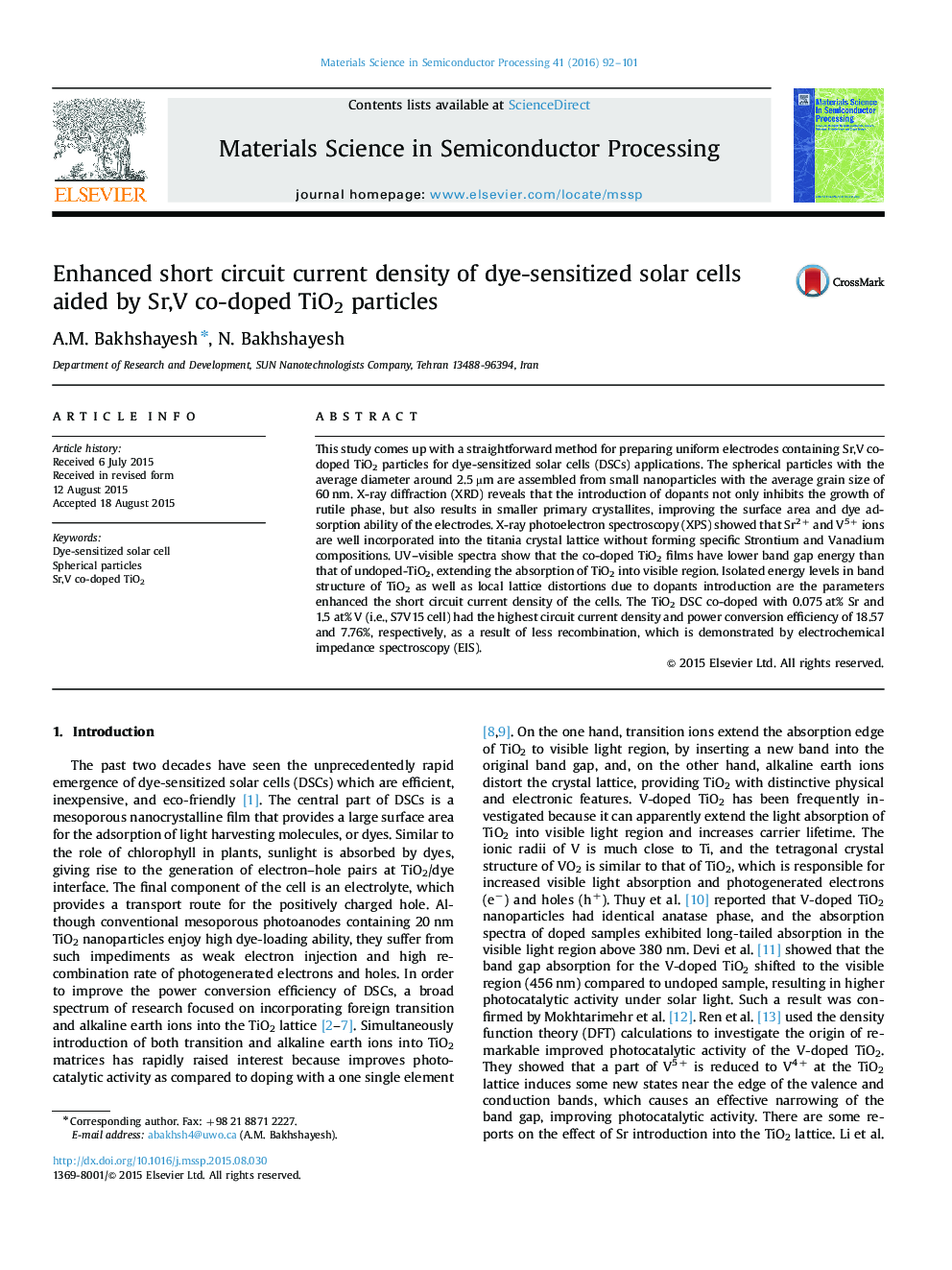| Article ID | Journal | Published Year | Pages | File Type |
|---|---|---|---|---|
| 728164 | Materials Science in Semiconductor Processing | 2016 | 10 Pages |
This study comes up with a straightforward method for preparing uniform electrodes containing Sr,V co-doped TiO2 particles for dye-sensitized solar cells (DSCs) applications. The spherical particles with the average diameter around 2.5 µm are assembled from small nanoparticles with the average grain size of 60 nm. X-ray diffraction (XRD) reveals that the introduction of dopants not only inhibits the growth of rutile phase, but also results in smaller primary crystallites, improving the surface area and dye adsorption ability of the electrodes. X-ray photoelectron spectroscopy (XPS) showed that Sr2+ and V5+ ions are well incorporated into the titania crystal lattice without forming specific Strontium and Vanadium compositions. UV–visible spectra show that the co-doped TiO2 films have lower band gap energy than that of undoped-TiO2, extending the absorption of TiO2 into visible region. Isolated energy levels in band structure of TiO2 as well as local lattice distortions due to dopants introduction are the parameters enhanced the short circuit current density of the cells. The TiO2 DSC co-doped with 0.075 at% Sr and 1.5 at% V (i.e., S7V15 cell) had the highest circuit current density and power conversion efficiency of 18.57 and 7.76%, respectively, as a result of less recombination, which is demonstrated by electrochemical impedance spectroscopy (EIS).
